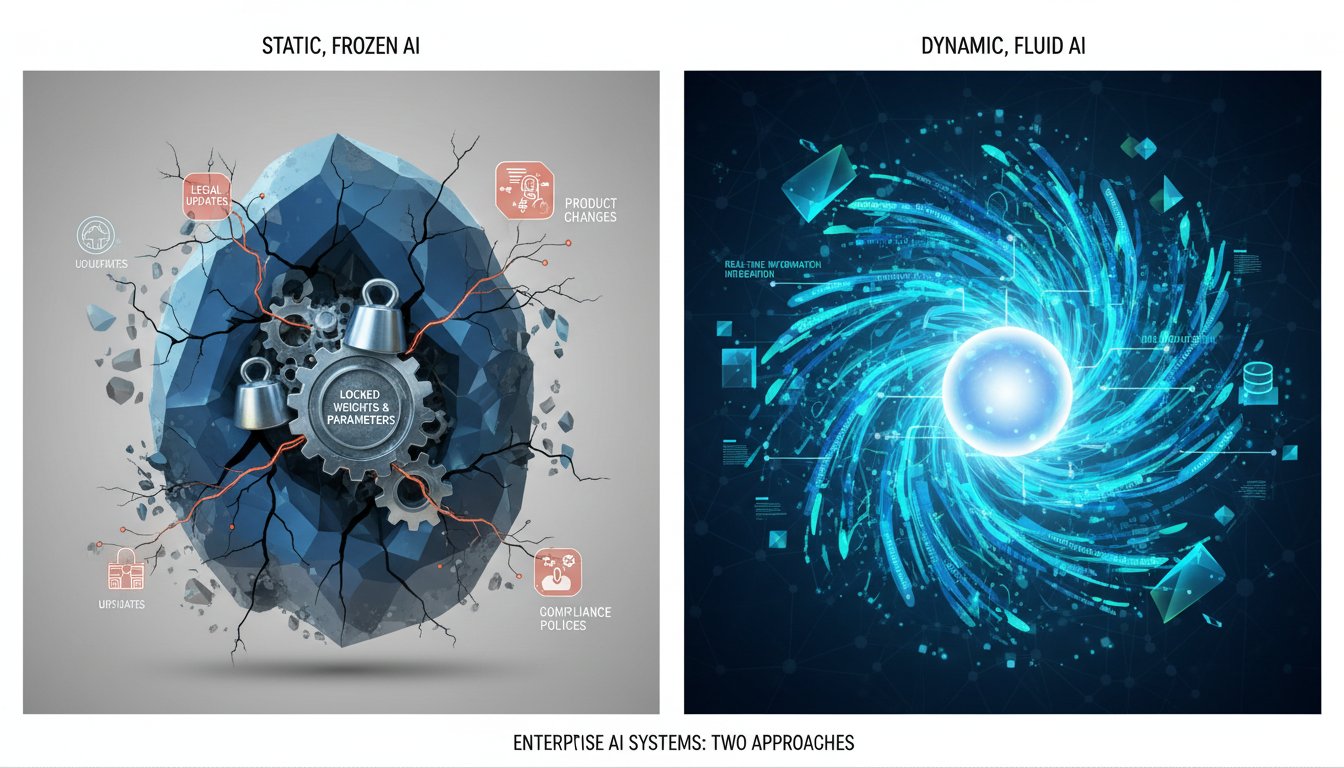Introduction
As Retrieval Augmented Generation (RAG) systems transition from experimental projects to production environments, the choice of vector database becomes increasingly critical. Vector databases serve as the foundation for RAG architectures, storing and retrieving the embeddings that enable AI systems to access relevant context for generating accurate, grounded responses.
In this post, we’ll compare four leading vector database options—Pinecone, Weaviate, Chroma, and Milvus—examining their performance characteristics, scaling capabilities, pricing models, and integration options. Whether you’re building your first production RAG system or optimizing an existing one, this analysis will help you make an informed decision aligned with your specific use case and organizational constraints.
Understanding Vector Databases in RAG Systems
Before diving into specific solutions, let’s quickly review what vector databases do in a RAG architecture:
- Store vector embeddings: Convert text and other data into high-dimensional vectors that capture semantic meaning
- Enable similarity search: Find vectors (and their corresponding content) that are semantically similar to a query
- Scale with data volume: Manage growing collections of vectors efficiently
- Integrate with LLMs: Connect seamlessly with large language models to form a complete RAG system
As your RAG application moves to production, considerations like query latency, throughput, data persistence, and operational costs become increasingly important.
Comparing Vector Database Options
Pinecone
Overview
Pinecone is a fully managed vector database designed specifically for machine learning applications. It’s known for its simplicity, scalability, and performance.
Key Features
- Fully managed service with no infrastructure to maintain
- Automatic scaling and replication
- Support for metadata filtering during vector search
- Real-time updates and low-latency queries
- Python SDK and REST API
Performance Metrics
Pinecone excels in query performance, consistently delivering p95 latencies under 100ms even at scale. Internal benchmarks show Pinecone maintaining this performance with indices containing hundreds of millions of vectors.
Code Example: Basic Pinecone Integration
import pinecone
from sentence_transformers import SentenceTransformer
# Initialize connection
pinecone.init(api_key="your-api-key", environment="your-environment")
# Create index if it doesn't exist
if "rag-index" not in pinecone.list_indexes():
pinecone.create_index("rag-index", dimension=768)
# Connect to index
index = pinecone.Index("rag-index")
# Load embedding model
model = SentenceTransformer('all-MiniLM-L6-v2')
# Example document
doc_text = "Vector databases are essential for production RAG systems."
doc_id = "doc1"
# Generate embedding and upsert
embedding = model.encode(doc_text).tolist()
index.upsert([(doc_id, embedding, {"text": doc_text})])
# Query example
query_text = "What technologies do I need for RAG?"
query_embedding = model.encode(query_text).tolist()
results = index.query(vector=query_embedding, top_k=3, include_metadata=True)
print(results)
Pricing Model
Pinecone uses a pod-based pricing model, starting with a free tier for smaller projects and scaling up based on vector dimensions, index size, and query volume. For production deployments, expect costs to start around $70-$100/month for the smallest pod and scale up significantly for larger workloads.
Best For
- Teams wanting a zero-ops solution
- Applications requiring high availability and consistent performance
- Production environments with moderate to large data volumes
- Use cases where query latency is critical
Weaviate
Overview
Weaviate is an open-source vector database with a strong focus on semantic search capabilities. It offers both self-hosted and cloud-hosted options.
Key Features
- GraphQL and RESTful APIs
- Multi-tenancy support
- Hybrid search combining vector similarity with BM25 text search
- Modular architecture with pluggable vectorizers
- Built-in schema validation and data type verification
Performance Metrics
Weaviate performs well in both single-node and clustered configurations. Benchmarks show it handling millions of vectors with query latencies typically between 20-200ms depending on configuration and hardware. Its HNSW indexing algorithm provides a good balance between search accuracy and performance.
Code Example: Weaviate with Hybrid Search
import weaviate
from sentence_transformers import SentenceTransformer
# Connect to Weaviate
client = weaviate.Client("http://localhost:8080")
# Define schema
class_obj = {
"class": "Document",
"vectorizer": "none", # We'll provide our own vectors
"properties": [
{"name": "content", "dataType": ["text"]},
{"name": "source", "dataType": ["string"]}
]
}
# Create schema if it doesn't exist
if not client.schema.contains({"class": "Document"}):
client.schema.create_class(class_obj)
# Load embedding model
model = SentenceTransformer('all-MiniLM-L6-v2')
# Add document with custom vector
doc_text = "Vector databases power efficient retrieval in RAG systems."
embedding = model.encode(doc_text)
client.data_object.create(
class_name="Document",
data_object={
"content": doc_text,
"source": "technical-blog"
},
vector=embedding.tolist()
)
# Hybrid search query
query_text = "How do RAG systems retrieve information?"
query_embedding = model.encode(query_text)
result = client.query.get(
"Document", ["content", "source"]
).with_hybrid(
query=query_text,
vector=query_embedding.tolist(),
alpha=0.5 # Balance between vector and keyword search
).with_limit(3).do()
print(result)
Pricing Model
As an open-source solution, Weaviate can be self-hosted at no software cost (though infrastructure costs apply). Weaviate Cloud Services offers managed instances starting at around $80/month for the smallest configurations. Enterprise pricing is available for larger deployments.
Best For
- Organizations that prefer open-source solutions
- Applications requiring hybrid search capabilities
- Teams with DevOps resources for self-hosting
- Use cases needing fine-grained control over the vector search infrastructure
Chroma
Overview
Chroma is a relatively new, lightweight vector database designed specifically for RAG applications, with a focus on developer experience and simplicity.
Key Features
- Embedded and client-server modes
- Simple Python API designed for RAG workflows
- Built-in document embedding functionality
- Persistent or in-memory storage options
- First-class support for LangChain integration
Performance Metrics
Chroma is optimized for smaller to medium-sized datasets, handling hundreds of thousands of vectors efficiently. It’s not designed to compete with enterprise-grade solutions for massive vector collections but offers excellent performance for typical RAG applications, with query latencies generally under 100ms for moderately sized collections.
Code Example: Chroma with LangChain Integration
from langchain.embeddings import HuggingFaceEmbeddings
from langchain.vectorstores import Chroma
from langchain.text_splitter import RecursiveCharacterTextSplitter
from langchain.document_loaders import TextLoader
# Load document
loader = TextLoader("sample_data.txt")
documents = loader.load()
# Split text into chunks
text_splitter = RecursiveCharacterTextSplitter(chunk_size=1000, chunk_overlap=100)
split_docs = text_splitter.split_documents(documents)
# Initialize embeddings
embeddings = HuggingFaceEmbeddings(model_name="all-MiniLM-L6-v2")
# Create and persist vector store
vectorstore = Chroma.from_documents(
documents=split_docs,
embedding=embeddings,
persist_directory="./chroma_db"
)
# Perform a similarity search
query = "What are the main components of a RAG system?"
docs = vectorstore.similarity_search(query, k=3)
for doc in docs:
print(doc.page_content)
print("------------------")
Pricing Model
Chroma is open-source and free to use. There’s no managed service offering as of this writing, so infrastructure costs are your only consideration. This makes it a cost-effective option for teams with the resources to deploy and maintain their own infrastructure.
Best For
- Early-stage RAG projects and prototyping
- Small to medium-sized datasets
- Applications with tight integration with LangChain
- Teams looking for a lightweight, easy-to-implement solution
Milvus
Overview
Milvus is a robust, cloud-native vector database built for scale. It offers advanced features for enterprise deployments while maintaining an open-source core.
Key Features
- Distributed architecture supporting billions of vectors
- Multiple index types (HNSW, IVF, etc.) for different performance profiles
- Support for scalar filtering during vector search
- Time travel (data versioning) capabilities
- Sharding and replication for high availability
Performance Metrics
Milvus is designed for high-throughput, high-scale environments. Benchmarks show it effectively handling billions of vectors with tunable performance characteristics. Query latency can range from sub-10ms to several hundred milliseconds depending on the index type, configuration, and hardware. It excels in environments requiring high query throughput.
Code Example: Milvus with Scalar Filtering
from pymilvus import (
connections, Collection, FieldSchema, CollectionSchema,
DataType, utility
)
import numpy as np
from sentence_transformers import SentenceTransformer
# Connect to Milvus
connections.connect(host="localhost", port="19530")
# Define collection schema
dim = 768
collection_name = "rag_documents"
fields = [
FieldSchema(name="id", dtype=DataType.INT64, is_primary=True),
FieldSchema(name="embedding", dtype=DataType.FLOAT_VECTOR, dim=dim),
FieldSchema(name="text", dtype=DataType.VARCHAR, max_length=65535),
FieldSchema(name="category", dtype=DataType.VARCHAR, max_length=20),
FieldSchema(name="created_at", dtype=DataType.INT64)
]
schema = CollectionSchema(fields=fields)
# Create collection if it doesn't exist
if utility.has_collection(collection_name):
collection = Collection(collection_name)
collection.load()
else:
collection = Collection(name=collection_name, schema=schema)
# Create index (HNSW for better recall/performance balance)
index_params = {
"metric_type": "COSINE",
"index_type": "HNSW",
"params": {"M": 8, "efConstruction": 64}
}
collection.create_index(field_name="embedding", index_params=index_params)
collection.load()
# Load embedding model
model = SentenceTransformer('all-MiniLM-L6-v2')
# Insert data
docs = [
{"text": "Vector databases enable efficient similarity search for RAG systems.", "category": "technology"},
{"text": "Properly configured RAG improves LLM accuracy and reduces hallucinations.", "category": "ai"},
{"text": "Database selection impacts the scalability of production RAG implementations.", "category": "architecture"}
]
ids = [i for i in range(1, len(docs) + 1)]
embeddings = [model.encode(doc["text"]).tolist() for doc in docs]
texts = [doc["text"] for doc in docs]
categories = [doc["category"] for doc in docs]
timestamps = [int(time.time()) for _ in docs]
# Insert into collection
collection.insert([
ids, embeddings, texts, categories, timestamps
])
# Query with filter on category
query = "What's important for RAG systems?"
query_embedding = model.encode(query).tolist()
search_params = {"metric_type": "COSINE", "params": {"ef": 32}}
results = collection.search(
data=[query_embedding],
anns_field="embedding",
param=search_params,
limit=2,
expr="category == 'architecture'", # Filter by category
output_fields=["text", "category"]
)
for hits in results:
for hit in hits:
print(f"ID: {hit.id}, Distance: {hit.distance}")
print(f"Text: {hit.entity.get('text')}")
print(f"Category: {hit.entity.get('category')}")
Pricing Model
Milvus is open-source and can be self-hosted. Zilliz, the company behind Milvus, offers Zilliz Cloud, a managed service with pricing based on compute, storage, and data transfer. Starting costs for small production deployments are typically $100-200/month, scaling with usage.
Best For
- High-volume, high-scale production RAG systems
- Enterprise environments requiring advanced features
- Applications with complex filtering requirements
- Teams needing a solution that can scale from millions to billions of vectors
Performance Benchmark Comparison
While individual performance varies based on deployment configuration and workload characteristics, here’s a comparative analysis based on published benchmarks and real-world implementations:
| Database | 1M Vectors Query Time | Max Practical Scale | Scaling Model | Operational Complexity |
|---|---|---|---|---|
| Pinecone | 20-80ms | Billions | Automatic | Low (fully managed) |
| Weaviate | 30-150ms | Hundreds of millions | Manual/Kubernetes | Medium |
| Chroma | 50-200ms | Millions | Manual | Low (simple deployment) |
| Milvus | 10-100ms | Billions+ | Manual/Kubernetes | High (distributed system) |
Note: These figures represent typical performance under common configurations and may vary significantly based on specific implementations.
Decision Framework for Vector Database Selection
When evaluating vector databases for your RAG system, consider the following decision framework:
1. Scale Requirements
- Small scale (thousands to millions of vectors): Chroma provides simplicity and ease of implementation
- Medium scale (tens to hundreds of millions): Pinecone or Weaviate offer good balance of performance and operational simplicity
- Large scale (billions+): Milvus or Pinecone (enterprise tier) provide the necessary distributed architecture
2. Operational Model
- Managed service preferred: Pinecone offers the simplest operational model, followed by cloud offerings from Weaviate and Zilliz
- Self-hosted preferred: All except Pinecone can be self-hosted, with Chroma being simplest and Milvus most complex
3. Integration Requirements
- LangChain-centric: Chroma offers the tightest integration
- Custom workflows: Weaviate and Milvus provide more flexible APIs
- Simplicity focused: Pinecone’s streamlined API makes integration straightforward
4. Search Capabilities
- Pure vector search: All options perform well
- Hybrid search: Weaviate excels with built-in BM25 capabilities
- Complex filtering: Milvus and Pinecone offer advanced filtering capabilities
5. Budget Constraints
- Minimal budget: Self-hosted Chroma on minimal infrastructure
- Moderate budget: Pinecone starter pods or Weaviate Cloud
- Enterprise budget: Enterprise tiers of any solution based on other requirements
Conclusion
Selecting the right vector database for your production RAG system requires balancing performance needs, operational resources, and budget constraints. Here’s a final summary to guide your decision:
- Pinecone: Best for teams wanting a zero-ops, managed solution with consistent performance
- Weaviate: Ideal for applications requiring hybrid search and teams comfortable with some operational overhead
- Chroma: Perfect for smaller projects, prototypes, and LangChain-integrated applications
- Milvus: Suited for large-scale enterprise deployments requiring advanced features and custom infrastructure
As RAG systems continue to evolve, vector database capabilities will remain a critical factor in their success. By understanding the strengths and limitations of each option, you can build a foundation that allows your RAG implementation to scale effectively as your data and user needs grow.
Remember that benchmarking with your specific data and query patterns is the best way to validate performance for your use case. Consider starting with a proof of concept using your actual data before committing to a particular solution for production deployment.
What vector database powers your RAG implementation? Let us know in the comments about your experiences and any other factors that influenced your decision!




